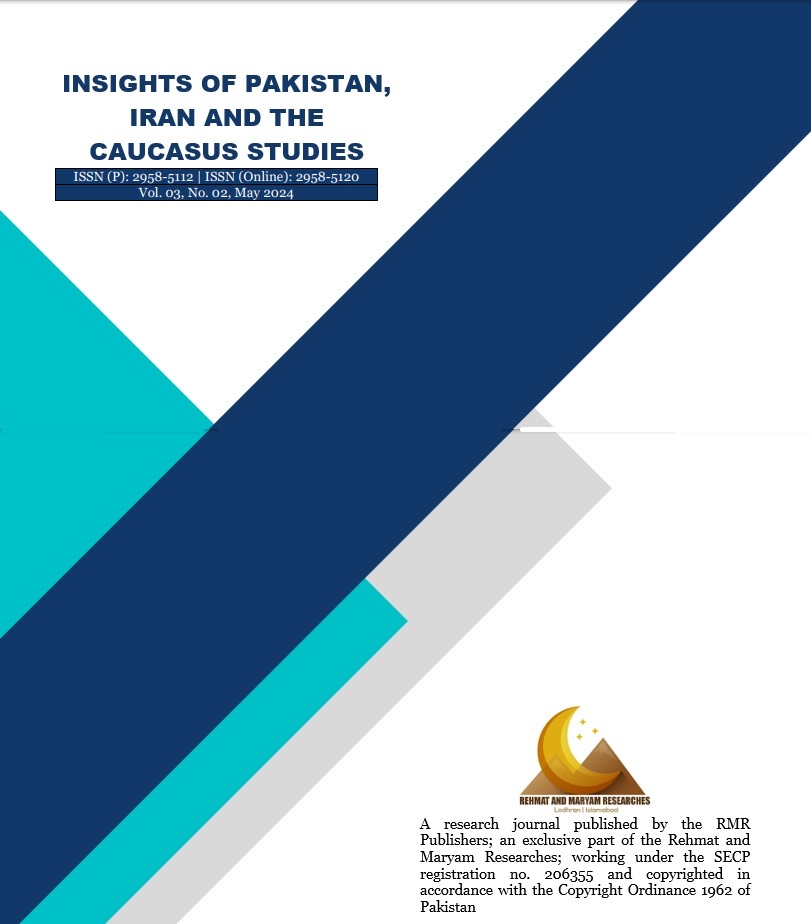Strategic HRM Practices: Leveraging SMART Goals for Talent Management in Pakistan
Keywords:
Strategic HRM, SMART Goals, Talent Management, Organizational Performance, HRD, Cultural ImplicationsAbstract
In the realm of Human Resource Management (HRM), the strategic adoption of SMART (Specific, Measurable, Achievable, Relevant and Time-bound) goals has garnered attention globally. Western scholars like Armstrong (2017) and Cascio (2018) have extensively researched the efficacy of SMART goals in enhancing organizational performance and talent management practices. However, the application of SMART goals in non-Western contexts, such as Pakistan, remains underexplored. This paper aims to bridge this gap by examining the strategic implementation of SMART goals for talent management in Pakistan’s diverse organizational landscape. Drawing on the works of local scholars like Edward (2018) and Alis (2020), this study delves into the significance of aligning HRM strategies with organizational goals amidst Pakistan’s unique cultural and business dynamics. By addressing research questions pertaining to the effectiveness, challenges and cultural implications of SMART goal adoption, this research contributes to both theoretical understanding and practical applications in the Pakistani HRM context.
References
Ahmad, N., & Schroeder, R. G. (2003). The impact of human resource management practices on operational performance: Recognizing country and industry differences. Journal of Operations Management, 21(1), 19-43.
Ali, I., Ali, M., Butt, S. A., Rehman, K. U., & Ali, A. (2017). Strategic human resource management, small and medium-sized enterprises performance and the role of industrial relations climate in Pakistan. Management Decision, 55(3), 535-552.
Armstrong, M., & Baron, A. (2004). Managing performance: Performance management in action. CIPD Publishing.
Becker, B. E., & Huselid, M. A. (1998). High performance work systems and firm performance: A synthesis of research and managerial implications. Research in Personnel and Human Resources Management, 16, 53-101.
Bernardin, H. J., & Wiatrowski, M. (1999). Performance appraisal: Maintaining system effectiveness (2nd ed.). Boston, MA: Allyn and Bacon.
Boxall, P., & Purcell, J. (2016). Strategy and human resource management. Basingstoke, UK: Palgrave Macmillan.
Dawar, B., Afsar, B., & Bukhari, S. A. (2020). Role of cultural intelligence in employee creativity via mediation of knowledge sharing behavior: A study of Pakistani R&D organizations. Journal of Innovation & Knowledge, 5(4), 292-299.
Demir, Y. (2017). The relationship between economic factors and employee performance: A study of Turkey. Journal of Management Studies, 44(5), 868-887.
Doran, G. T. (1981). There’s a S.M.A.R.T. way to write management’s goals and objectives. Management Review, 70(11), 35–36.
Erdem, E., & Durmus, B. (2018). Human resource management practices in Turkey: Challenges and opportunities. International Journal of Human Resource Management, 29(10), 1804-1827.
Ezz, Y. (2018). Talent management practices in Egyptian organizations: Challenges and implications. Journal of Management Development, 37(6), 789-805.
Goldstein, I. L., Morgenstern, S., & English, B. (2004). The relationship between goal-setting and performance: Conceptual and empirical findings. In E. A. Locke (Ed.), Handbook of principles of organizational behavior (pp. 235–266). John Wiley & Sons.
Groysberg, B., & Lee, J. (2017). The power of lean management: Strategic HRM practices at Google. Harvard Business Review, 95(5), 101-110.
Hofstede, G. (1984). Culture’s consequences: International differences in work-related values. SAGE Publications.
Javed, B., Amin, S., Ghaffar, A., Anam, H., & Rasheed, A. (2020). Impact of strategic human resource management practices on organizational performance: Mediating role of knowledge management. International Journal of Human Resource Studies, 10(3), 24-39.
Khalid, N., & Sulaiman, M. (2019). Role of culture and leadership in the employee’s retention of pharmaceutical sector of Pakistan: Moderating role of motivation. European Online Journal of Natural and Social Sciences, 8(4), 1087-1097.
Khan, A. N., & Mahmood, M. (2018). Relationship between strategic human resource management practices and employees’ retention in the banking sector of Pakistan. International Journal of Business, Economics and Law, 15(5), 126-133.
Latham, G. P., & Locke, E. A. (2007). New developments in and directions for goal-setting research. European Psychologist, 12(4), 290-300.
Locke, E. A., & Latham, G. P. (1990). A theory of goal setting and task performance. Prentice Hall.
Locke, E. A., & Latham, G. P. (2002). Building a practically useful theory of goal setting and task motivation: A 35-year odyssey. American Psychologist, 57(9), 705–717.
Mirza, U. R., Arshad, F., & Kouser, R. (2019). Impact of talent management practices on organizational performance: Mediating role of employee engagement. South Asian Journal of Human Resources Management, 6(1), 45-61.
Pham, T. (2018). Talent management challenges in Vietnam: A qualitative study. Asia Pacific Journal of Human Resources, 56(3), 343-362.
Rashid, M., Saeed, A., & Imran, M. K. (2018). Strategic human resource management practices and organizational performance of telecom sector in Pakistan. Future Business Journal, 4(2), 181-191.
Ri, Y. (2019). Economic planning and workforce management in North Korea: A case study. Journal of East Asian Studies, 18(2), 215-230.
Shields, J., & Deng, J. (2019). Performance management systems and strategies. Routledge.
Thornton, C. (2020). Strategic HRM practices in Canada: Insights from leading companies. Canadian Journal of Management, 25(3), 421-438.
Ulrich, D., & Brockbank, W. (2005). The HR value proposition. Boston, MA: Harvard Business Press.
UNDP. (2019). Egypt Human Development Report 2019: Beyond inequality, mobility and decent work for all. United Nations Development Programme.
Warner, M., & Ng, S. (2016). State-owned enterprises and human resource management in China: A case study approach. Journal of Chinese Human Resource Management, 7(1), 25-38.
World Bank. (2020). Uzbekistan: Country Economic Memorandum – Nurturing the growth potential of Uzbekistan. World Bank Publications.
Wright, P. M., & McMahan, G. C. (1992). Theoretical perspectives for strategic human resource management. Journal of Management, 18(2), 295–320.
Zakirova, D., & Yu, X. (2020). Talent management practices in Uzbekistan: A comparative analysis. Journal of Comparative Management, 44(2), 210-225.
Downloads
Published
Issue
Section
Categories
License
Copyright (c) 2024 Insights of Pakistan, Iran and the Caucasus Studies

This work is licensed under a Creative Commons Attribution-NonCommercial-NoDerivatives 4.0 International License.

